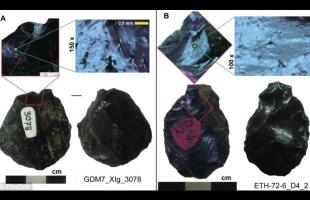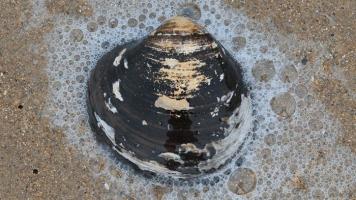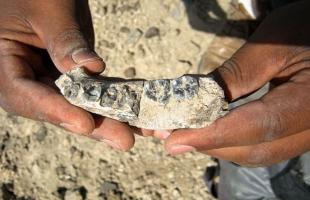Copy Link
Add to Bookmark
Report
HOMEBREW Digest #1297

This file received at Sierra.Stanford.EDU 93/12/14 02:35:29
HOMEBREW Digest #1297 Tue 14 December 1993
FORUM ON BEER, HOMEBREWING, AND RELATED ISSUES
Rob Gardner, Digest Coordinator
Contents:
Mead questions (XLPSJGN)
Yeast Farming/Ranching (Michael D. Galloway)
Murphys pressure device (David French)
Murphy's DraughtFlow System (Paul Beard)
boiling specialty grains (George Tempel)
chopstick method (George Tempel)
German Malt Types (Phil Brushaber)
hacker-pschorr weiss? (George Tempel)
Trading Micros, Long Way Home, etc. ("Pamela J. Day 7560")
Northern lagering (RONALD DWELLE)
Burnt? not anymore! ("Jeff M. Michalski, MD")
Koch's Non-Alcoholic Beer? (Alan_Marshall)
Another question re: aluminium pots (XLPSJGN)
Brewpots: kegs or REAL stock pots? (Tom Leith MIR/ERL 362-6965)
re: northern brewing (TODD CARLSON)
Need Receipe for Belgian White Beer (David Allison 225-5764)
Trivia / Jade (Ed Hitchcock)
Geysers (RONALD DWELLE)
Reusing yeast/adding grains to extract/carbonation (Keith MacNeal 13-Dec-1993 1238)
Pete's Winter, burnt flavor (Russell Gelinas)
Re: "Cat's Meow" ("Craig Hicks")
RE: FTP-ing from sierra.stanford.edu (Donald Sharp)
RE: Answer these questions, three.... (3) (Donald Sharp)
British Hop Substitutes (Hubert Plummer)
Oxygen for brewing (Bob Jones)
Simulating an English beer engine (Bob Jones)
Re:HeadRetention/ChopstickMethod/InconsistentCarbonation/NorthernLager (korz)
America's Finest City AHA Competition (x-4378)" <Simpson@po2.rb.unisys.com>
Sabco's RIMS Equipment (George J Fix)
Re: misc. answers ("Mark B. Alston")
Oregon Nut Brown Ale (John Walaszek)
scorching in mash tun (tims)
Abbey Ale recipe (Aaron Birenboim)
winter ale (HBUCKS)
winter ale (HBUCKS)
Send articles for __publication_only__ to homebrew@hpfcmi.fc.hp.com
(Articles are published in the order they are received.)
Send UNSUBSCRIBE and all other requests, ie, address change, etc.,
to homebrew-request@hpfcmi.fc.hp.com, BUT PLEASE NOTE that if
you subscribed via the BITNET listserver (BEER-L@UA1VM.UA.EDU),
then you MUST unsubscribe the same way!
If your account is being deleted, please be courteous and unsubscribe first.
Archives are available via anonymous ftp from sierra.stanford.edu.
(Those without ftp access may retrieve files via mail from
listserv@sierra.stanford.edu. Send HELP as the body of a
message to that address to receive listserver instructions.)
Please don't send me requests for back issues - you will be silently ignored.
For "Cat's Meow" information, send mail to lutzen@novell.physics.umr.edu
----------------------------------------------------------------------
Date: Sun, 12 Dec 93 20:04 CST
From: XLPSJGN%LUCCPUA.BITNET@UICVM.UIC.EDU
Subject: Mead questions
Dear Brewers,
My fiance asked me about three weks ago whether I had any plans to brew
a mead for our honeymoon, and I thought the idea was great. So I
consulted with Papezian and chose his recipe for the Barckshack Ginger
Mead, adding razberries (sp?) and refraining from additional spices,
like lemongrass or cinnamon. I adjusted the measurements for a 2 gal
batch, rather than the standard 5 gal.
I'd brewed a mead once before - it was a recipe I'd received from this
forum called something like "quick mead" which was supposed to be
ready within a month... It wasn't! At least as far as the taste went..
But then again, that was my first batch. I've been brewing beers for
about four years with some really quite good results - and some dismal
failures (some may remember my troubles with an atrocity I named for the
flooding of Chicago: "Chicago Tunnel Water"). So anyway, here are my
questions for mead enthusiasts:
The mead is now racked into 2 1gal. bottles (one is full to the neck,
the other about only 1/2 full). OG: 1.055; SG @ racking: 1.010.
The taste before pitching was exquisite, with an almost perfect
balance between the honey, ginger and razberries (about a pound of
those) However @ racking, the fermentation seemed to have hurt the
flavor, with an off flavor best described as like A & D Ointment! The
"bouquet" seemed to have soured as well, offering a smell more like
ripe yeasties (like when we clean our carboys after bottling). Is
this normal and/or will these flavors mellow and balence within a few
months? That's question #1.
Question #2 is: After I racked to the secondary vessels and fixed them
with fermentation locks, I brought these tanks to the basement storage
area to ferment, settle and clarify for another month or so before
I bottle. But there are hot water pipes that run through the storage
roomand do give off some heat (I'd estimate that it's a steady 80F
though I've not yet monitored the temperature). I don't think its
too threatening to the brew, but just to be sure, what is an accept-
able temperature range for meads in the secondary?
Thanks in advance for any and all responses, which can also be emailed
to me at xlpsjgn@luccpua.it.luc.edu or to catfishjon@aol.com.
Whew! that's good brew!
John
------------------------------
Date: Mon, 13 Dec 1993 07:29:44 -0500
From: mgx@ornl.gov (Michael D. Galloway)
Subject: Yeast Farming/Ranching
I've got a quick question regarding yeast ranching. I've been ranching
yeastfor a year or so now using the kit from BrewTek but I'm still a
little confused about one subject: what is the best (optimal) way
to go from a yeast collected from a bottle to a plate (to isolate a
single colony) to a slant? I've sort of got down the part going from
the bottle to the plate, but what do you do with the single colony
off the plate? I'd like to build up a decent slant to share with my
friends. Thanks ...
michael
------------------------------
Date: Mon, 13 Dec 93 11:31:47 GMT
From: David French <david_f@s3dub.ie>
Subject: Murphys pressure device
As far as I can see the plastic insert in the Murphys can
releases a stream of gas bubbles through the liquid when the
can is opened and "dunked".
As an Irish person orginally living a mile from the Murphy's
Brewery the difference between the new pressurised can and the
real thing from a pub tap is very slight.
David F
------------------------------
Date: Mon, 13 Dec 1993 08:19:36 -0500
From: paul.beard@gatekeeper.mis.tridom.com (Paul Beard)
Subject: Murphy's DraughtFlow System
Guinness also offers these in their Pub Draft cans; "like a keg, but easier
to carry" say the ads.
I dunno how they work, but I regard it as the natives viewed the thermos
("How does it know if the drink is hot or cold?"), or as Arthur C. Clarke
said, "any sufficiently advanced technology is indistinguishable from
magic."
Paul Beard
AT&T Tridom, 840 Franklin Court, Marietta, GA 30067
404 514-3798 * FAX: 404 429-5419 * tridom!paul.beard/beardp@tridom.com
------------------------------
Date: Mon, 13 Dec 1993 08:34:41 +0000 (U)
From: George Tempel <tempel@MONMOUTH-ETDL1.ARMY.MIL>
Subject: boiling specialty grains
boiling specialty grains
Steve Tollefsrud steve_t@fleurie.compass.fr writes in #1295:
>3. When/How to Add Specialty Grains: I plan to make the following
extract based stout:
4 lbs. Muntons Dark Malt Extract Syrup
4 lbs. Muntons Light Malt Extract Syrup
1/2 lb. Crushed Crystal Malt
1/2 lb. Crushed Chocolate Malt
1/2 lb. Black Patent Malt
(1 lb rolled oats ???)
1 oz. Northern Brewer Hops (30 min.)
1.5 oz Hallertauer loose Hops (dry, in the primary)
>None of my homebrew info sources explain when/how to properly
use specialty grains for an extract based brew.
In the past I've just tossed my grains in at the beginning of the
boil and boiled the hell outta them for an hour. Those batches
were VERRRY bitter, though I'm not sure if it wasn't the Northern
Brewer (2 oz, loose) which I was trying out at the same time.
Should I not let the grains get more than 150 degrees F, as in
mash conversion? Should I add them after the boil, below a certain
temperature, and let them steep. What temps? What times?
Thanks again,
steve, as a fellow extract brewer (2 batches so far) I can tell
you not to boil the hell outta the speciality grains, as you'll
suck the tannins from the husks, contributing to quite a bitter
tang. Much like overbrewing a _dark_ tea, it's not something
you wanna do.
Hope this helps.
george
------------------------------
Date: Mon, 13 Dec 1993 08:51:33 +0000 (U)
From: George Tempel <tempel@MONMOUTH-ETDL1.ARMY.MIL>
Subject: chopstick method
chopstick method
> The "Chopstick Method"
...
>If done properly, you will have neatly extruded almost every drop of
extract and will not have it all over you, your helper, your kitchen
and the dog (or cat).
...
>Thanks to Rob Dahlgren, inventor of the chopstick method.
Hope this is helpful.
Norman (nfarrell@ppco.com)
sorry norm/rob...i've done it too! But we rather _like_
covering ourselves with malt extract (and the cats)!
george
------------------------------
Date: Mon, 13 Dec 93 05:44:00 -0600
From: phil.brushaber@lunatic.com (Phil Brushaber)
Subject: German Malt Types
For several months in my all-grain brewing I have been chasing
that very malty character found in premium German Octoberfest,
Bocks, etc. I have tried decoction but it still doesn't seem to be
getting me there. I wonder if I should use different malts?
My local homebrew supply carries Ireks German Pilsner, Vienna and
Munich. I have been using these in various combinations as called
for in a given recipe. Are there more malty German malts available,
perhaps by mail order? If so, I'd appreciate your dropping
me a note to direct my "hunt". Thanks!
... My first brew? More for the crapper than the capper.
___ Blue Wave/QWK v2.11
- ----
=*=*=*=*=*=*=*=*=*=*=*=*=*=*=*=*=*=*=*=*=*=*=*=*=*=*=*=*=*=*=*=*=*=*=*=*=*=*=
The Lunatic Fringe BBS * 214-235-5288 * 3 nodes * Richardson, TX* 24 hrs
UseNet, ILink, RIME, FIDO, Annex, Intelec, LuciferNet, PlanoNet, and more!
=*=*=*=*=*=*=*=*=*=*=*=*=*=*=*=*=*=*=*=*=*=*=*=*=*=*=*=*=*=*=*=*=*=*=*=*=*=*=
------------------------------
Date: Mon, 13 Dec 1993 09:16:09 +0000 (U)
From: George Tempel <tempel@MONMOUTH-ETDL1.ARMY.MIL>
Subject: hacker-pschorr weiss?
hacker-pschorr weiss?
Has anyone out there attempted to come close
to the Hacker-Pschorr Weiss? It's a pale yellow
weiss, with lots of body and sediment, and goes
_great_ with a drop of raspberry and wedge of
lemon (that's how I was first introduced to
it back in college at the Brass Rail in Hoboken).
thanks in advance
george
------------------------------
Date: Mon, 13 Dec 1993 09:25:00 EST
From: "Pamela J. Day 7560" <DAY@A1.TCH.HARVARD.EDU>
Subject: Trading Micros, Long Way Home, etc.
Hello All,
Is there anyone out there who would be willing to trade
any type of micro-brewed beer that is availible only in their area
for anything I can get them up here in the Northeast (Boston & New
England)? My boyfriend & I have a bottle collection that we'd like
to expand, and aren't real fussy ( we'll drink almost anything!) so
if you'd like to try something from around this-a-way let me know,
and we'll work out a deal.
Re: taking the long way home; This past weekend we found
ourselves driving home from a couple of days skiing in Vermont and
decided to make the trip a brewery/brewpub tour. 1st stop, Mountain
Brewers in Bridgwater, Vt., the makers of Long Trail (Amber Ale, Stout,
Kolsch,I.P.A.) self guided tour, small tap room, great beer! 2nd stop,
Catamount in White River Junction, they have guided tours (we missed
everything but the tasting) and tasting of current products. Both of
these two sell bottled product and other stuff in the "tap room". 3rd
stop, Latchis Hotel, (brewpub has a separate name I don't remember at
the moment) Brattleboro Vt. This place was ok, the beer was tasty but
it had a yuppie-fern bar type atmosphere that was a little stuffy. Last
but certainly not least was McNeil's Brewery in Brattleboro. Great beer,
good food (sandwiches, nachos, nothing fancy), I wish they'd had a places
like this around when I was in college, it looked like it'd be a real fun
place when it was busy. BTW, McNeils should get awards just for the names
of their beers, i.e. Duck's Breath Bitter, Slopbucket Brown, Dead Horse IPA,
to name a few.
I tried Molson Ice this weekend, $3.00/bottle at some bar in
Killington, (thankfully the bartender goofed and only charged us for
one!) all I can say is YUCK! Absolutly no taste what so ever. I wouldn't
spend the money to give it away to some poor unsuspecting fool.
Ah well, back to work,
Cheers,
Pam
Day@a1.tch.harvard.edu
------------------------------
Date: Mon, 13 Dec 93 10:06:33 EST
From: dweller@GVSU.EDU (RONALD DWELLE)
Subject: Northern lagering
Greg Pyle writes of dunking lager carboy in the French River
and asks if he's missing something.
Wouldn't the sucker blow up over the winter (assuming it's
fermenting)? Happy fish?
Ron Dwelle (dweller@gvsu.edu at Internet)
Have a Beery Beery Christmas!
------------------------------
Date: Mon, 13 Dec 93 09:04:00 -0500
From: "Jeff M. Michalski, MD" <michalski_jm@rophys.wustl.edu>
Subject: Burnt? not anymore!
HBDers,
Thank you for your comments about the burnt taste
I had in my Xmas ale last week. I wanted to bring you
up to date on a dramatic change that took place. I
drew another pint out of the keg to better characterize
the off taste last Thursday. The burnt after taste was
GONE! After only one week! Now the beer has a wonderfully
smooth character with a mild sweetness balanced by an
appropriate hop bitterness. The hop aroma is powerful
with a spicy note. (this is the batch I posted a dry-hop
question on several months ago. I took the plunge and
added 3.5 oz of Willamette pellets to the racked beer.)
I wouldn't believe the dramatic change in the beer character
if I hadn't tasted it myself. Furthermore, my wife who is
not a beer lover {not even my own 8-( } tasted the burnt
taste last week and now thinks the beer is drinkable. I believe
that the long conditioning and "lagering" at 40F allowed
some of the more bitter, off flavor components to precipitate
to the bottom of the keg. My first 5 pints or so drew off
this evil stuff and now I have a pretty tasty holiday brew.
Thank you all for your comments anyway.
JEFF M. MICHALSKI
michalski_jm@rophys.wustl.edu
------------------------------
Date: Mon, 13 Dec 1993 10:20 EDT
From: Alan_Marshall <AK200032@Sol.YorkU.CA>
Subject: Koch's Non-Alcoholic Beer?
In HBD 1296:
> Date: Sat, 11 Dec 93 13:57:33 PST
> From: Bob <TATTERSH@WSUVM1.CSC.WSU.EDU>
> Subject: Non-alcoholic beer
> In response to the December 9, 1993 posting by
> GNT_TOX_%ALLOY.BITNET@PUCC.PRINCETON.EDU regarding non-alcoholic beer:
> In September I brewed my first batch of non-alcoholic beer.
> Essentially I copi ed a recipe from Papazian. With a few ingredient
> alterations to his Righteous Real Ale, the procedure is as follows:
>
> On Day 1, boil the malt extract in 2 gallons of water, using Irish
> Moss as a settling agent for the final 15-20 minutes. Without adding
> any hops in this initial boiling, cool after a 30-45 minute boil suing
^^^^^
> whatever cooling method you prefer. Pitch yeast in your usual fashion
> once you have added the necessary amount of water to equal 5 gallons.
That would be Jim Koch's method :-)
------------------------------
Date: Mon, 13 Dec 93 09:25 CST
From: XLPSJGN%LUCCPUA.BITNET@UICVM.UIC.EDU
Subject: Another question re: aluminium pots
Dear brewers,
Over the years I've developed a boiling technique which, while seeming
to ease the boiling process (actually the removal of steeped specialty
grains from the boil), I've always suspected but never questioned
whether it's harmful to the beer I make.
What I do is steep the grains in 1.5 gal. of cold water in my 3 gal
stainless steel brew pot and bring that to a boil (a la Papezian).
Then, once the water begins to boil, Papezian instructs to remove the
grains from wort before adding the malt extract and hops (I'm not
ready for the all-grain league yet). But this always was a long and
tedious process, fishing around for all those little grains. So, I
thought I'd shorten the process by placing a strainer over another
brew pot of the same capacity, but made of aluminium. I'd sparge the
collected grains, then return the wort to the original stainless steel
pot, reheat to a boil then add the extract(s) and hops.
So the questions are: 1) Is the (temporary) use of the aluminium pot
detrimental to my beer? even if it's in the pot for 15 minutes max?
and 2) is my method of straining the grains - basically pouring the
wort once through a strainer, and again back into the original pot -
going to effect or hurt (bruise?) the wort... even if I haven't yet
added the extracts and hops?
Thanks in advance for the responses, and thanks to all who responded
earlier to my mead questions.
Cheers!
John
------------------------------
Date: Mon, 13 Dec 1993 09:57:55 -0600
From: trl@photos.wustl.edu (Tom Leith MIR/ERL 362-6965)
Subject: Brewpots: kegs or REAL stock pots?
Brett --
IMNSHO, the *minimum* useful size for brewing a five gallon batch is a 32
quart pot (8 gallons). You can get an enamel 8 gallon canning pot for about
$35 (with lid). This is what I'm using. The geometry is poor for doing a 2
hour boil -- too much surface area for the volume. I boil 75 minutes, and go
from about 7 gallons to about 5-3/4. The lid is on (_on_ is too strong -- its
over the pot, but plenty of steam esacpes) for the last 15 minutes while the
chiller and the lid get sterilized. The 8 gallon pot covers two burners on my
stove, and I use `em both during the boil.
I would like to get a ten gallon stainless stock pot, but they cost about $175
new. So, I'm thinking about going the old keg route instead. Oh, if you get
a stockpot, get one with a thick bottom. Some of `em have a copper disk
sandwhiched between layers of stainless, others use aluminum. That's what you
really want. Otherwise, the thicker, the better.
Good Luck,
t
------------------------------
Date: Mon, 13 Dec 93 12:23:46 EST
From: carlsont@GVSU.EDU (TODD CARLSON)
Subject: re: northern brewing
Lagering under a frozen river/lake sounds like a great idea.
In fact I was planning to do something simmilar over the
holidays. I was going to lager my beer in a tank full of
water in the garage. Since the freezing point of beer is
lower than the freezing point of water, as long a the tank
doesn't freeze, then the beer will stay unfrozen at 32 F
(zero C) or higher. I figure that here (in Michigan) my
garage should stay warm enough to keep the tank of water
from freezing. The water will also act as a large heat sink
to moderate temperature fluctuations. If we get a severe
cold snap I can just bring the beer inside for a bit or rig
up a heater in the garage. A friend of mine did this once -
called it his garage lager. One concern about lagering
under the ice would be that too much pressure would build up
in a closed container from residual fermentation that takes
place during lagering. I have not lagered before so I don't
know how much fermentation to expect at this stage. I will
probably use a fermentation lock.
Todd Carlson
carlsont@gvsu.edu
------------------------------
Date: Mon, 13 Dec 1993 09:24:00 -0800 (PST)
From: David Allison 225-5764 <ALLISON.DAVID@A1GW.GENE.COM>
Subject: Need Receipe for Belgian White Beer
I am looking for a all-grain receipe for a Belgian White Beer. I have the
grains and the new Wyeast Belgian White Beer yeast (thanks to FF in Los
Altos, CA <-- plug).
Does anyone have ideas/receipes/suggestions on mashing protocol, hops,
hopping rates, spices, fermentation temperatures, maturation and bottle vs.
keg conditioning.
I did look at the book "Belgian Ale" and Cats Meow, but didn't see much on this
style. I am looking for something like Haargarden (sp?) or Celis, both of
which are excellent IMHO.
E-mail me directly or post or both. TIA
- David
(allison2.gene.com)
------------------------------
Date: Mon, 13 Dec 1993 13:50:53 -0400
From: Ed Hitchcock <ECH@ac.dal.ca>
Subject: Trivia / Jade
Here's a question for those breweriana afficianados: Why, specifically, do
bavarian beer mugs have a lid? IS there a story or tradition behind this?
/
A friend recently compared an experimental batch of mine to a beer called
Jade (I think, though the spelling may be wrong). He seemed to think it
was a pale Flanders style ale from the north of France. Anyone have any
further info on this beer (ie style, ingredients, OG, aroma and flavour
profiles, similar beers)?
Thanks.
____________
Ed Hitchcock ech@ac.dal.ca | Oxymoron: Draft beer in bottles. |
Anatomy & Neurobiology | Pleonasm: Draft beer on tap. |
Dalhousie University, Halifax |___________________________________|
------------------------------
Date: Mon, 13 Dec 93 13:04:15 EST
From: dweller@GVSU.EDU (RONALD DWELLE)
Subject: Geysers
On Gushing Beer
The following quote is from the Encyclopedia of Chemical
Technology:
"Wild or gushing beer is a defect observed as a rather
violent over-foaming from the bottle immediately after
opening; this defect, however, does not affect the taste of
the beer. The fundamental cause of gushing is attributed to
the formation of micro-bubbles. It has been demonstrated
that the application of excess pressure sufficiently forces
the micro-bubbles back into the solution, eliminating
overfoaming entirely. Gushing beers have been identified
with malt made from weathered barley, and trial brews have
proved that the presence of mycelia (from the mold species
Fusaria) in the steep will promote the trouble."
Ain't that the truth?
Ron (dweller@gvsu.edu at Internet)
"Five Gallons of Happiness Coming Soon..."
------------------------------
Date: Mon, 13 Dec 93 12:59:27 EST
From: Keith MacNeal 13-Dec-1993 1238 <macneal@pate.enet.dec.com>
Subject: Reusing yeast/adding grains to extract/carbonation
In HOMEBREW Digest #1295 steve_t@fleurie.inria.fr (Steven Tollefsrud) asks:
>1. Re-using Lager Yeast in Fermenter: I was wondering what risks
>or advantages there would be if I ferment a second batch on top
>of the yeast left in my primary after siphoning off the previous
>batch.
I haven't done it, but I've read several accounts of people doing this
successfully. In #1296 someone mentions yeast washing which help avoiding any
worries caused by the trub.
>3. When/How to Add Specialty Grains:
...
>None of my homebrew info sources explain when/how to properly
>use specialty grains for an extract based brew.
>In the past I've just tossed my grains in at the beginning of the
>boil and boiled the hell outta them for an hour. Those batches
>were VERRRY bitter, though I'm not sure if it wasn't the Northern
>Brewer (2 oz, loose) which I was trying out at the same time.
The bitterness you noted was not caused by the hops. It was caused by boiling
the grains. Boiling extracts tannins which will lead to an astringent taste
in your brew. I've been sucessful putting the specialty grains into a muslin
bag and putting it into the brewpot along with the cold brewing water. I then
heat the water and grain and remove the grain bag just before the water comes
to a boil. Some claim this method may also extract tannin and advocate
bringing the water to 150 deg.F and letting the grains steep.
- ------------------------------
>From: Jack Tavares <tavares@ctron.com>
>Subject: Fountaining Beer
>I opened a bottle of my Christmas Stout (after only 5 days .-)_
>And it made the most beautiful black, gingery smellig fountain
>that I have seen in a long time.
>Now, i am going to let it sit at least another week before I
>open up another bottle.
>If i have the same problem, is there anything I can do to correct
>it?
Letting it sit another week won't solve the problem -- in fact it might
worsen. One thing you could try is to chill the beer down in the bottle
before opening. This worked for me with a batch I overprimed by mistake.
- ------------------------------
>From: "Adrian L. Anderson (Andy" <alanders@mwc.vak12ed.edu>
>Subject: New w/question
>Brewers,
> I am new to the list and to homebrewing. Have one batch of
>Continental Light, made from a kit, to my credit. My product
>came out fine body and colorwise w/ good carbonation. The only
>problem is a very (ultra - mega) yeasty aftertaste.
Were you careful not to pour the yeast sediment from the bottom of the bottle
into your glass?
- ------------------------------
>From: "Dennis Lewis" <DLEWIS%jscdo6@jesnic.jsc.nasa.gov>
>Anyway, I get a lot of grain particles that bypass the screen,
>enough that I have to send the runnings thru a strainer to catch the
>big pieces. I have an adjustable MaltMill and have tried it set as
>wide as .055" to minimize husk shredding, but I still get
>granule-size particles passing the screen. Whaddaya think?
>
>I've considered
>* Crushing twice. Once set wide to remove husks, then set close to
>pulverize everything.
>* Getting a smaller screen size, like 1/16" holes
>* Having the screen welded into the keg or fitting some sort of
>gasket around the screen. There is a slight gap around the edges,
>but it appears to be of less width than the holes. Also, right as
>the last of the liquor drains out, I get a huge amount of grain
>coming out the tap.
>* Putting a small extension on the keg side of the outlet to raise
>it about the bottom of the tun floor, letting any crud sit on the
>bottom.
Have you considered recirculating your wort? The grain bed acts as a filter
and should help clear the wort before it gets to the brewkettle.
- ------------------------------
>From: MATTHEW.BOHNE@sprint.sprint.com
>Subject: BREW PROBLEM..
>WHEN I MOVED EVERYTHING TO THE FERMENT TANK I DIDN'T GET A BUBBLE FOR THE 1ST
>DAY, HOWEVER 2 DAYS LATER IT WAS AT FULL CRANK. ON THE 6TH DAY IT BLEW BEER
>THROUGH THE VAPOR LOCK SOME 9 FEET INTO THE AIR(RATHER FUN TO WATCH BUT A MESS
>TO CLEAN..) THE HEAD PEEKED AND FELL BACK IN, I DRAINED IT TO THE SECOND
>FERMENT TANK AND WAITED.. IT BUBBLED SLIGHTLY ONCE AN HOUR, 2 DAYS LATER, I
>BOTTLED. IT HAS BEEN 2 WEEKS AND I WENT DOWN TO THE CELLAR AND I NOTICED A
>WHITE RING INSIDE OF ALL THE BOTTLES... WHAT IS THIS?? IT ALMOST LOOKS LIKE A
>MINI HEAD BECAUSE IT SEEMS TO BE THICKENED FROTH... WILL IT GO AWAY?? SHOULD I
>JIGGLE THE BOTTLES AND GET IT TO DROP TO THE BOTTOM? I ALSO NOTICED A THICKER
>SEDIMENT IN THE BOTTOM OF MY BOTTLES THAN USUAL. SHOULD I BE CONCERNED? I
>OPENED ONE AND GOT THIS MAJOR GUSHER (I SEEM TO BE GETTING A LOT OF THESE
>THESE DAYS BOTH WITH OLD AND NEW BEERS) -- SHOULD THEY BE CHILLED LONGER? IS
>THERE ANYWAY TO COUNTERACT THIS?
You may have bottled too early. Did you monitor the specific gravity?
Another possible explanation is that you picked up an infection somewhere in
your process. Revisit your sanitizing procedures.
- ------------------------------
According to Zymurgy's Beer Professor, aluminum is just fine for the
brewkettle in a homebrewery. He says the reason the big boys use stainless
steel is because they use very aggressive cleaners which would chew through
aluminum.
Keith MacNeal
Digital Equipment Corp.
Hudson, MA
------------------------------
Date: Mon, 13 Dec 1993 13:13:23 -0500 (EST)
From: gelinas@ekman.unh.edu (Russell Gelinas)
Subject: Pete's Winter, burnt flavor
Try Pete's Winter special beer for an excellent example of raspberry
flavor/aroma in a beer. The recipe is from a winner in the 1993 AHA
national homebrewing contest. IMO, it's a world class brew, at least.
Re. burnt taste: Most likely it's from the abundance of dark malt
in the grain bill, but it could be that you scorched the brown sugar.
You did remember to turn the heat off and stir well when you added the
sugar, didn't you?
Russ Gelinas
EOS
UNH
------------------------------
Date: Mon, 13 Dec 93 10:00:26 EST
From: "Craig Hicks" <chicks@nas.edu>
Subject: Re: "Cat's Meow"
In the latest HBD, several people refer to the "Cat's Meow." In the header of
each issue, there is a cryptic message that reads "For 'Cat's Meow'
information, send mail to lutzen@novell.physics.umr.edu" For the benefit of
newer subscribers such as myself, could someone please explain what it is? A
recipe file? Something more?
------------------------------
Date: Mon, 13 Dec 93 12:39:26 EST
From: cc32859@vantage.fmrco.com (Donald Sharp)
Subject: RE: FTP-ing from sierra.stanford.edu
>From: bwchar@mail.wm.edu (Brett Charbeneau)
>
>Help!
>
> I can't seem to be able to log onto the sierra machine. I can
>telnet to it get the login prompt, but no matter what I try I
>continually get an ''incorrect login'' error.
I'm not 100% sure, but I think sierra is not set up to allow telnet
login access, only ftp. I haven't lately tried myself, but I have
been successful in the past. Instead of telnet, why not try ftp? I'd
use the combination anonymous/bwchar@mail.wm.edu if I were you. Give
it a go and see what happens, depending on the results maybe we can
troubleshoot further.
Don
------------------------------
Date: Mon, 13 Dec 93 13:15:41 EST
From: cc32859@vantage.fmrco.com (Donald Sharp)
Subject: RE: Answer these questions, three.... (3)
>Date: Fri, 10 Dec 93 11:42:55 +0100
>From: steve_t@fleurie.inria.fr (Steven Tollefsrud)
>
>3. When/How to Add Specialty Grains: I plan to make the following
>extract based stout:
> 4 lbs. Muntons Dark Malt Extract Syrup
> 4 lbs. Muntons Light Malt Extract Syrup
> 1/2 lb. Crushed Crystal Malt
> 1/2 lb. Crushed Chocolate Malt
> 1/2 lb. Black Patent Malt
> (1 lb rolled oats ???)
> 1 oz. Northern Brewer Hops (30 min.)
> 1.5 oz Hallertauer loose Hops (dry, in the primary)
>
>None of my homebrew info sources explain when/how to properly
>use specialty grains for an extract based brew.
I've been doing extract-based brewing for about 2 years now, and most
of what I know comes from The Complete Joy of Homebrewing and HBD.
I generally add some small amount of specialty grain to my
extract-based brews. I might add 1-2 pounds of crystal malt at the
maximum, but less than half a pound combined of all other types. The
thing to remember is that except for crystal, the specialty malts you're
adding are contributing unfermentable starch to the brew. Crystal
malt is different, in processing it mostly gets converted to
fermentable sugar. Processing malt in other ways, e.g. roasting it to
achieve darker colors, not only doesn't convert the starch, but in
fact destroys the enzymes in the malt needed to do the conversion.
When you start adding amounts on the order of 1 lb or more adjuncts,
as your recipe suggests, you're going to get a lot of unconverted
starch in the wort, which will eventually end up in the beer.
To avoid this, if you really want to use all these adjucts (which you
well might if you want to brew a nice stout) you might consider (as I
do with almost every batch :-) using a partial-mash process. You have
to be sure that (at least some of) the extract you use has the ability
to convert the starch to fermentable sugars. The only commercially
available extract that I know of is that has the conversion capacity
is Edme's DMS (Diastatic Malt Syrup.) (This info comes (I think) from
TCJoH, I'd be pleased to hear about other alternatives.)
Anyway, without getting into partial-mashing, the way I treat my
specialty grains is to add them to the cold water at the start of the
process, and then when the water is about to boil, before adding malt
extract or hops, remove as much as possible with a kitchen seive.
This technique comes directly from TCJoH. The justfication is that
the good stuff (color, flavoring, proteins, whatever you're adding the
grains for) is easily soluable, and doesn't need a lot of boiling to
extract, and that prolonged boiling will just extract some excessively
bitter stuff, probably mostly tannin, from the husks.
Don
------------------------------
Date: 13 Dec 93 13:55:14 EST
From: Hubert Plummer <71601.3106@CompuServe.COM>
Subject: British Hop Substitutes
I hope some of the vast net knowledge can give me some assistance in finding
these hops, or decent substitutes. In many recipies for british ales, one
comes across hops that don't appear to be available over here in the US. So
can anyone provide a source that carries these or perhaps some reasonable
substitutes (yes I am checking the Hops FAQ as you read this). The hops in
question are:
Challenger
Brambling
Target
Whitbread Goldings
Northdown
Progress
Thanks for any help
Hubert
------------------------------
Date: Mon, 13 Dec 1993 11:31:35 +0800
From: bjones@novax.llnl.gov (Bob Jones)
Subject: Oxygen for brewing
Is there an inexpensive source for pure oxygen to use in wort oxygenation?
Anyone out there using pure oxygen for wort oxygenation?
Bob Jones
bjones@novax.llnl.gov
------------------------------
Date: Mon, 13 Dec 1993 12:13:53 +0800
From: bjones@novax.llnl.gov (Bob Jones)
Subject: Simulating an English beer engine
OK, I think it's about time I report on my latest gadget. Some of you may
remember my recent trip to the UK. I fell in love with the beers there and
have been fooling around with ideas to simulate the flavors and dispensing
methods I experienced there. The cask conditioned ales have some
characteristics that are easy to simulate. Hops, malt, low gas, warm, yeast
but some that aren't. I got home and immediately brewed up a low gravity,
english style ale. When I put it on my draft system, something was missing.
I had kept the CO2 at 0 psi when kegging and brought the gas up to about
5psi to dispense. Tasted OK, but the head was gone of course. The creamy
whipped head is caused by the sparklers on most beer engines in the UK. Ok,
I thought what the beer engine REALLY does is lift or pull the beer from the
keg and force the beer through a series of very small holes. This causes
both foaming and whipping of air into the beer. I reasoned that I could do
the same without a beer engine. What I built is a valve with a piece of
copper tubing at the output of the valve. The end of the copper tubing has a
cap on it. The cap has about 6 holes .020 in diameter in it. This assembly
is placed at the end of about a four foot piece of 1/4" id PVC line. Now to
use this gadget I raise the keg pressure up to about 10 psi, open the valve
and point the output into a glass. As you can imagine, 6 streams of beer
exit and foam and aerate the beer. The glass fills and when you set the
glass down, the beer recombines in the glass from the bottom up, just like
the beers in the UK do. Now it's usually necessary to top the glass off in a
few seconds, they also do this in the UK. After I've dispensed the beer I
reduce the keg pressure back to 0psi. Bingo, this gadget very closely
simulates the flavors and effect of the English beer engines. The aeration
and head creamy head are bang on to what I tasted in the UK. I now have to
decide how to incorporate this gadget better into my draft system.
I am considering either one of two ideas to make using this concept alittle
easier to use. One would be to keep the keg at about 1psi and add a small
pump to raise the pressure to push the beer through the sparkler. The other
is to push the beer with nitrogen instead of CO2. This way I could leave the
keg at 10psi and not pick up any carbonation. I have been threatening to go
to a mixed gas system, this may be the push over the top. This post is
getting long, I'll stop by sayng, give it a try, you may like it. My
appologies to all the people in the UK on butchering the tradition of cask
condition ales, but I think I have come up with a pretty good simulation.
Fellow brewers, open your eyes, gased ales are not necessarly the best ales.
With no gas, one can make a lower gravity beer and experience the malt and
hop flavors MUCH better. I not saying I'm going to make all my beers now
without CO2, I am saying it really adds another demension to beer.
Cheers,
Bob Jones
bjones@novax.llnl.gov
------------------------------
Date: Mon, 13 Dec 93 15:01 CST
From: korz@iepubj.att.com
Subject: Re:HeadRetention/ChopstickMethod/InconsistentCarbonation/NorthernLager
Goeff writes:
>What you need for good head retention are proteins. Proteins are what
>provides the surface tension which give the bubbles some strength. However,
>proteins can also cause haze so you have to have a ballance. Hops are a
>good source of proteins for head retention but you have a Brown Ale so you
You're right about the proteins, but they have to be small proteins. Also,
I think you may be confusing something regarding the hops. I'm quite certain
there are no proteins gained by the beer from the hops, however, there have
been studies that have found a correlation between head retention and a certain
component of the hops (cohumulone, I believe... sorry, don't have my books
here). Perhaps this is what you've been experiencing.
***************
Norman writes about the "Chopstick Method" for getting all the extract out
of those bagged extracts. I have alternate method that I've invented and
subsequently am discarding after it's very first use. I'm posting it as a
warning to potential users. I call it the "Spoon and Exhaust Hood Method."
It involves pinning the bag between the Exhaust Hood and your Charismatic
Wooden Spoon and then pulling up on the bag. The problem with this method
is that inevitably the spoon slips off (under) the hood and flings a dollop
of extract against the backstop of the range. Yuck!
************
Rich writes about inconsistent carbonation despite always using 3/4 cup
of dextrose for priming.
There are two other factors besides the amount of priming sugar that can
cause overcarbonation. 1) unwelcome visitors and 2) bottling too early.
Unwelcome visitors include bacteria and wild yeasts. You may be introducing
them at bottling time, during fermentation or even as early as at pitching
time. Bacteria and wild yeasts (S. diastaticus, for example) often can
eat sugars that your primary fermentation yeast cannot. Thus, once the
primary fermentation is done, the wild yeasts slowly eat the left over
sugars and overcarbonate the beer. Alternatively, if you have bacteria in
your beer (which often do not produce gasses and thus do not overcarbonate
the beer directly), they can break the larger, unfermentable carbohydrates
into smaller, fermentable sugars which your fermenation yeast can now eat,
thereby overcarbonating. The second factor is much more easy to solve --
don't bottle too early. I usually wait till the airlock is bubbling less
than once per minute, often waiting till it's less than once per two minutes.
************
Greg writes:
>need some advice. He is going to do a full mash and rack of the cold break
>into a glass carboy. The carboy is going to be sealed up in plastic and
>placed carefully into the river just before ice-over. The theory here is that
>once the river freezes, the water temperature below the ice will be at 4 deg.
The only potential problem as I see it is that perhaps the ice expansion
could compress the part of the carboy that's sticking through the ice and
break it. Would the whole thing be under water, or would the top of the
carboy be sticking through the ice? If the whole thing was under water,
then I'd worry about pressure building up from (very slow) yeast activity
and popping the top.
As an alternative, why not build an insulated box and put a thermostatically
-controlled HEATER in it? This could be put outside and use nature to keep
it cold. The thermostat could be set to 4C and would warm the fermenter when
the temperature in the box gets too cold.
Al.
------------------------------
Date: Mon, 13 Dec 93 13:11:00 PST
From: "SIMPSON, Mark (x-4378)" <Simpson@po2.rb.unisys.com>
Subject: America's Finest City AHA Competition
This is it, Brew-Guys and Brew-Gals!!!
The First Annual "America's Finest City Homebrew
Competition", an AHA Sanctioned Competition will be held on the 12th of
March, 1994!!! All
recognized AHA beverage styles will be judged. Refer to Zymurgy for style
guidelines and contest details.
Contact either Skip Virgilio: (619) 566-7061 or Mark Simpson: (619)
578-2627. I can be e-mailed at:
simpson@rb.unisys.com. All entries must be on site by March 9th. I will
send a follow-up message when
the mailing and judging site has been established. So, GET BREWING NOW!!!
Cheers!
Mark Simpson; VP of QUAFF in San Diego
------------------------------
Date: Mon, 13 Dec 93 16:03:56 -0600
From: gjfix@utamat.uta.edu (George J Fix)
Subject: Sabco's RIMS Equipment
The folllowing should be added to my review of the RIMS which appeared
in the Winter issue of Zymurgy. This addition will appear in the next
issue.
- ----------------------------------------------------------------------
It has come to my attention that Sabco is marketing only a part of
the Conrad Keys/Rodney Morris RIMS system. Missing from Sabco's
product is the grain mill Conrad designed for this system.
This omission could possibly cause problems. Without the right sort of
crush this system could lead to grain compactification and leeching
of undesirables from husks, to cite but two examples. Thus anyone who
is interested in the Sabco system should also give serious consideration to
the purchase of an adjustable roller mill. Do not be afraid to experiment
with roller spacing, for the requirements on grain milling are different
for the RIMS setup as compared to a standard mashing system. The performance
of the system is the best guide to deciding how the grains should be crushed.
The goals are to get a smooth and homogeneous recirculation, yields in the
32-34 pts*gal/lb range, and absolutely no grain astringency in the finished
beer.
George Fix
------------------------------
Date: Mon, 13 Dec 93 15:31:43 MST
From: "Mark B. Alston" <c-amb@math.utah.edu>
Subject: Re: misc. answers
Brett Charbeneau wonders how to log into sierra.stanford.edu. When
asked for a user name respond ftp, and when it asks you for a password as
your complete email address respond r@ . The @ automatically appends
your site address. If you are up to no good respond with the address of
someone you don't like :-)
Try again. You need to *use* ftp not login *as* ftp. Brett was
trying to telnet to sierra rather than ftp there. Thus, the correct
procedure is to ftp to sierra and login as anonymous with your e-mail
address as your passord. i.e.
1) 'ftp sierra.stanford.edu'
2) enter 'anonymous' as user
3) enter e-mail address as password
Mark
------------------------------
Date: Mon, 13 Dec 93 17:20 CST
From: akcs.wally@vpnet.chi.il.us (John Walaszek)
Subject: Oregon Nut Brown Ale
After looking at the Winter Zymurgy I am intrigued by the
Oregon Nut Brown Ale. Can anyone who attended the Conference
comment on it.
The recipe calls for 3.3 lbs on Danish Unhopped malt syrup.
Does anyone know whether this is Light, Amber, Dark?
Since the recipe call for 3.3 lbs for a 10 gallon batch I would
replace with 1.5 lbs DME probably Laaglander for a 5 gallon
batch.
Does anyone know where to obtain the Hazelnut extract that was used?
The manufacturer is Stearns and Lehman.
Thanks
- Wally
------------------------------
Date: Mon, 13 Dec 93 16:12:40 -0800
From: tims@ssl.Berkeley.EDU
Subject: scorching in mash tun
Dear Dion,
You sent mail a while ago in response to my pico-brewery
question, and I have another question for you, if you know.
How much do I need to worry about scorching at the bottom of
the mash tun, if that is where I apply gentle heat. Is it
better to have a screen, and keep the bottom with liquid and
no grist against it (but no stirring of the liquid), or is
it better to put the grist right down on the metal, and use
some sort of slotted pipe (or Easymasher type) manifold/filter?
The heat source is an electric burner attached to the bottom
on the _outside_ of the SS mash vessel.
Any thoughts?
Thanks,
Tim
------------------------------
Date: Mon, 13 Dec 93 17:16:43 MST
From: abirenbo@redwood.hac.com (Aaron Birenboim)
Subject: Abbey Ale recipe
would somebody out there be kind enough to send me a nice abbey ale
recipe. I'm leary of those in rojette's book. (all grain and
candi-sugar preferred.)
aaron
------------------------------
Date: Mon, 13 Dec 1993 19:57:22 -0400 (EDT)
From: HBUCKS@delphi.com
Subject: winter ale
Does anyone have a receipt for an ale similar to
Young's Winter Ale. I have been told that it requires a
yeast that is less attentive than usual for this type of
ale. Can anyone shed any light on that? Thanks in
advance for replys.
------------------------------
Date: Mon, 13 Dec 1993 20:01:44 -0400 (EDT)
From: HBUCKS@delphi.com
Subject: winter ale
Does anyone have a receipt for an ale similar to
Young's Winter Ale. I have been told it requires a
yeast that is less attentive than usual for this type
of ale. Can anyone shed any light on that? Thanks in
advance for replys.
------------------------------
End of HOMEBREW Digest #1297, 12/14/93
*************************************
-------























